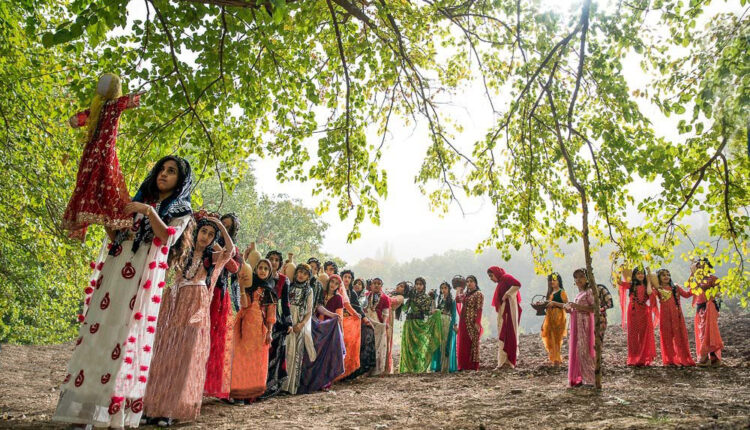Gahanbars festival in ancient Iran: Natural disasters and Zoroastrian customs
RELIGIONS NEWS AGENCY (REDNA) – As marked in Iranian calendar, 15th Aban (November) is the mid-autumn festival of Pa-i-zaneh. The mid-autumn festival in ancient Iran celebrated social unity against natural disasters.
Compared to other festivals in medieval Iran, the mid-autumn festival has remained unknown. The festival, with its own customs, is celebrated in middle of autumn season by Zoroastrians to honor nature changes and gardening.
The festivals of ancient Iran are one of the most important events in the history and culture of Iran. These festivals have survived over the past long years.
Some of these celebrations, internationally well-known, are gloriously being celebrated now. Nowruz and Yalda Night celebrations as the most famous authentic Iranian celebrations are very popular with Persian-spoken countries.
It is not exaggerated to say Iran is home to various festivals and ceremonies. Mid-autumn festival is just one of them:
Aban(November) 15th the day of mid-autumn celebration
Just a few Iranian ancient festivals have survived over the history and mid-autumn is one of the Gahanbar (occasional) festivals. Gahanbar is composed of “Gahan” means Time and “Bar” means “Result”, so Gahanbar as a whole means the time of blossom. Gahanbar, in fact, is the sex days when Ohrmuzd created the world. Each “Gah” (time spam) begans with a ritual. Six-Gahanbar, as an ancient terminology, ritual whose date backs to Pishdadians dynasty is mentioned in Shahnameh.
Each year has six Gahanbar. Each Gahanbar is celebrated for five days. During the celebrations votive foods are offered and Zoroastrians tank Ohrmuzd for creation of the world. In solemn feast, the sacrifical offerings made in the preceding liturgies are consumed in ritual purity.
Gahanbar, in Zoroastrianism, any of six festivals, occurring at irregular intervals throughout the year, which celebrate the seasons and possibly the six stages in the creation of the world (the heavens, water, the earth, the vegetable world, the animal world, and man).
Autumnal Festival, Unity against Natural Disasters
All Gahanbars were attended by different social class. Gahanbars begins with “Waj” ceremony in which a priest performs “Yasnakhani” and the faithful jointly perform.
Autumnal Festival was celebrated at fire temples, halls or people’s houses for 5 days.
Those attended the festival got united in belief and actions to stand together to overcome natural disasters like “drought, floods, earthquakes, storms”. At the end, they sat at the table cloth for dried fruit, bread or lunch and dinner.
Gahanbar was religiously obligatory. Every one depending on his income and economic potential paid his share. Gahanbar was a big symbol of social unity where all social class including rich and poor and men and women(males and females) came together at the same place and ate the same food. The leftovers of the easts were distributed among needier and poor people.
Objects on the Gahanbars table cloth
- Fire culprit and oil lamp.
- copper dishes
- Fruit
- Water
- cedar

Place of Gahanbars
Gahanbars were less known but celebrated by Zoroastrians at fire temples all over ancient Iran. In the list of cities serving as celebration`s host, Kermanshah was at the top. Zoroastrians of this city and those from neighboring areas as they did in the past come together, cook votive foods, offer sacrifices and distribute foods among poor to celebrate creation of plants. Yazd and Kerman are also in the list of Ghanbars festival places. Beside the mentioned cities, all active fire temples in Iran serve as a festival place and welcome the autumnal festival enthusiasts.
Sources: Isna, Namnak, Kajaroo
